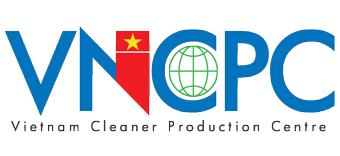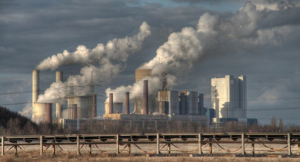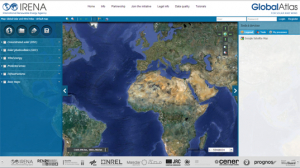Implementation of eco-industrial parks in Vietnam according to the approach from the Global Eco-Industrial Park Program – New opportunities for businesses
On the afternoon of July 15, in Hanoi, an online workshop was held to introduce the project “Implementation of eco-industrial parks in Vietnam according to the approach from the Global Eco-Industrial Park Program”.
This is a project funded by the State Secretariat for Economic Affairs (SECO) and implemented by the United Nations Industrial Development Organization (UNIDO) in developing and transitioning countries.
The project is aligned with the goals of the Global Eco-Industrial Park Program (GEIPP), demonstrating the feasibility and benefits of eco-industrial approaches in improving resource efficiency and economic efficiency, environment, and society at enterprises, thereby contributing to the sustainable and comprehensive industrial development in Vietnam.
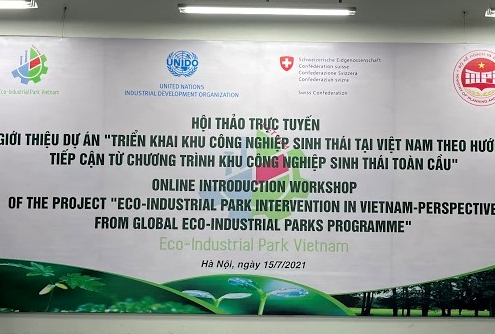
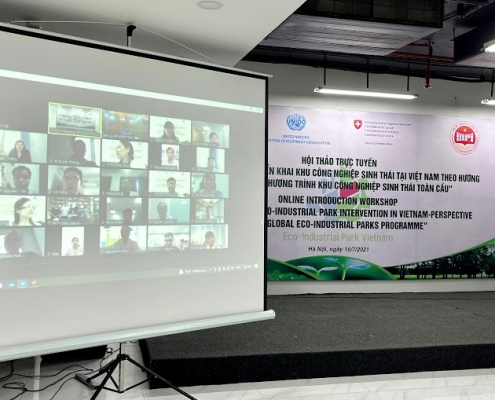
The conference was held online but has attracted many participants from enterprises.
In Vietnam, the project is implemented by the Ministry of Planning and Investment (MPI) in collaboration with UNIDO during the period from 2020 to 2023. The main beneficiaries of the project include Amata Industrial Park (Dong Nai), Dinh Vu Industrial Park (Deep C – Hai Phong), Hiep Phuoc Industrial Park (HCMC). In addition, the project continues to support the development of industrial symbiosis (IS) opportunities at the enterprise and industrial levesl that were identified from the previous phase of the project.
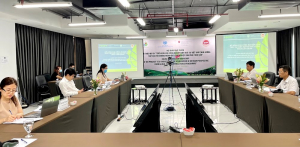
To implement the project, Vietnam Cleaner Production Center Co. Ltd (VNCPC – under BK Holdings – Hanoi University of Science and Technology) and Sofies (Switzerland) were selected to implement the component ” Provision of Services to identify resource efficiency and industrial symbiosis interventions, and to provide related training in Deep C (Hai Phong) and Amata (Dong Nai) industrial parks in Vietnam “. The experience in these industrial zones will be a model to replicate and develop the eco-industrial park model all over the country.
What benefits do enterprises get from participating in the project?
According to Ms. Vuong Thi Minh Hieu – Department of Management of Economic Zones (MPI), Deputy Director of the project: In the process of developing industrial zones, environmental impacts cannot be avoided.
Agreeing with the above opinion, Mr. Dinh Manh Thang – a senior expert on efficient use of resources and cleaner production of VNCPC said: According to calculations, it takes 2 piles of earth to meet the needs the current needs of more than 7 billion people. Therefore, the development of eco-industrial parks is an indispensable requirement for economic development to be less dependent on resources, thereby reducing pressure on the environment…
“There are many financial mechanisms for cleaner production and industrial activities from domestic banks such as BIDV, Agribank, Vietcombank, Sacombank, etc. through loans and credit guarantees. In addition, there are financial mechanisms from foreign banks/organizations, and support programs on capacity building and technology implemented by domestic and foreign organizations”, Mr. Nguyen Xuan Tinh – Sen 26 Trading Consulting Co., Ltd. shared.
Mr. Le Xuan Thinh, Director of VNCPC – the consulting unit said: The project will focus on training on resource efficiency and cleaner production (RECP), IS and knowledge about ecological industrial zones; Quick assessment of RECP and guidance to identify wastes in the production process, improvement opportunities to optimize profits, reduce production costs, save raw materials, energy, water…; Evaluating the feasibility and building industrial infrastructure solutions towards the eco-industrial park model; Support access to financial resources to implement IS solutions.
On July 27-28, VNCPC will organize a 2-day training program to improve the capacity of the RECP and IS for enterprises in Deep C Industrial Park (Hai Phong). However, enterprises outside DeepC can still participate in workshops.
VNCPC
